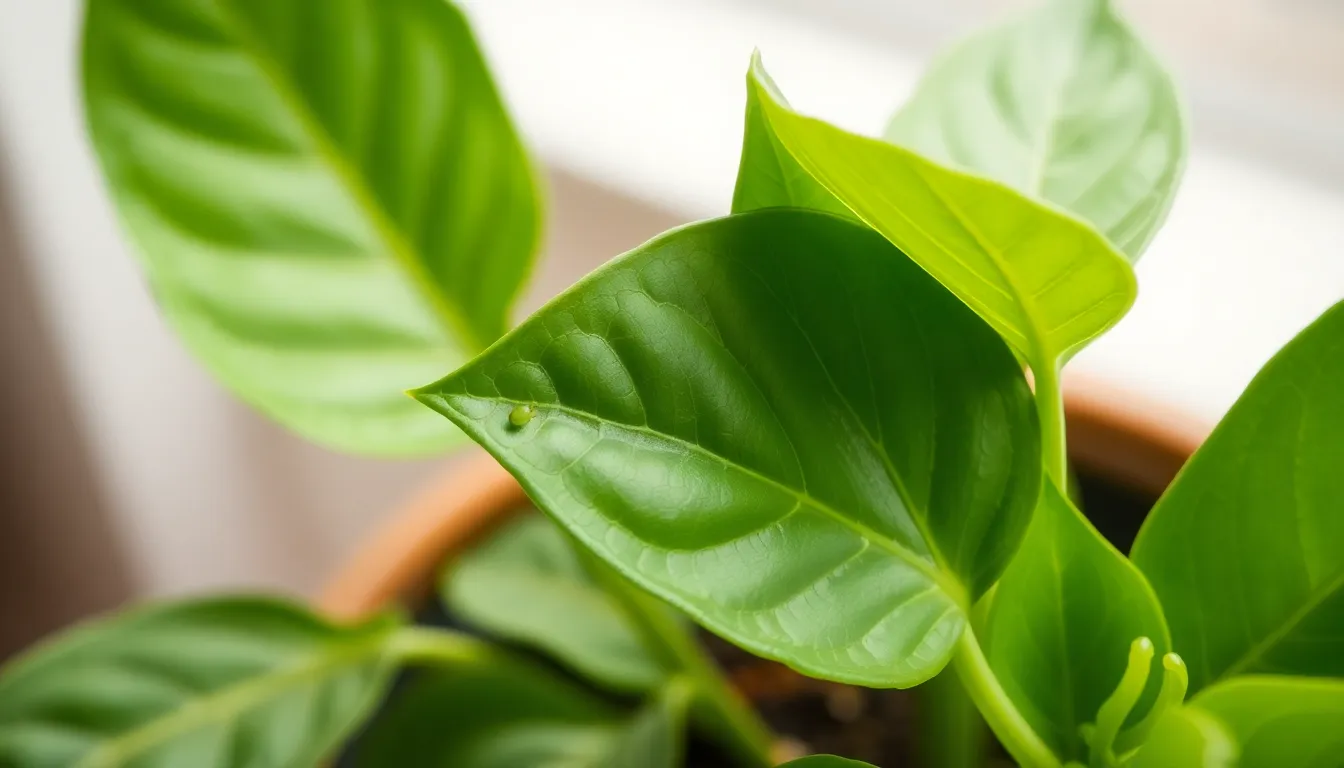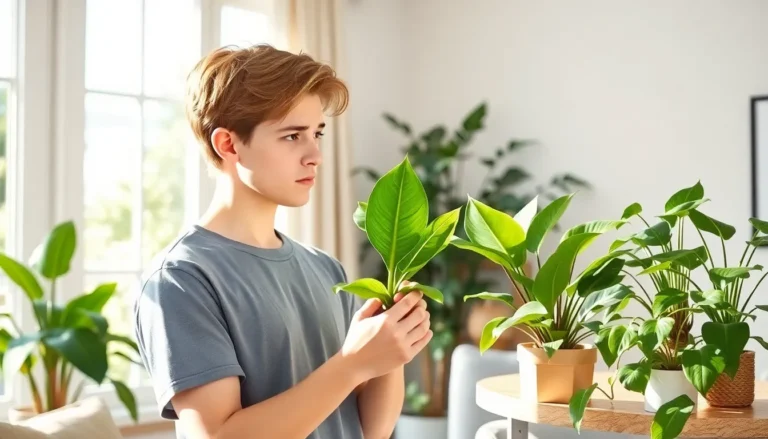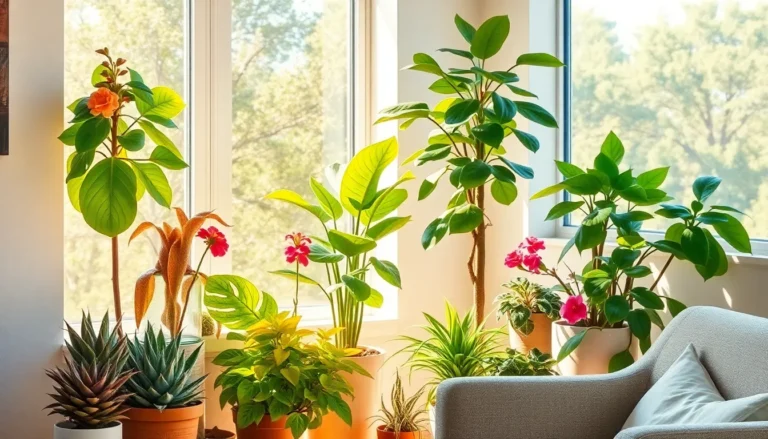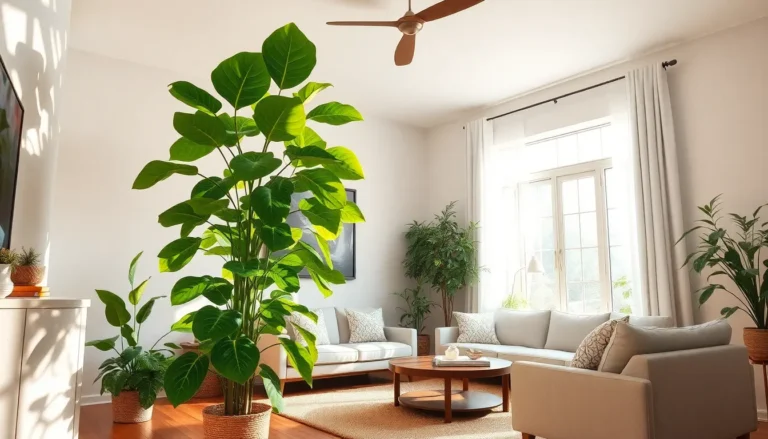Indoor plants bring life to any space, but they can also attract uninvited guests—aphids. These tiny green critters might look harmless, but they can wreak havoc on your beloved foliage faster than you can say “plant parent.” If you’ve ever spotted those little sap-sucking fiends munching away, you know it’s time to take action before your plant turns into their buffet.
Understanding Aphids on Indoor Plants
Aphids are small, soft-bodied insects that often appear on indoor plants. Heavily infesting plants can lead to leaf damage, stunted growth, and discoloration.
What Are Aphids?
Aphids belong to the superfamily Aphidoidea. Typically measuring 1 to 10 millimeters in length, these pests exhibit various colors including green, black, and yellow. They use their specialized mouthparts to extract sap from plants, causing harm and weakening them over time. An infestation usually leads to the secretion of honeydew, a sticky substance that attracts other pests and promotes sooty mold growth. Addressing aphid problems early can prevent severe plant damage and further pest complications.
Types of Aphids Commonly Found Indoors
Common types of aphids found indoors include the green peach aphid, the black bean aphid, and the cotton aphid. The green peach aphid primarily targets stone fruit and ornamental plants. Black bean aphids, as their name suggests, often infest beans and can cause substantial yield loss. Cotton aphids typically affect cotton plants but can also be found on various indoor species. Each type presents unique challenges, and recognizing the specific aphid involved can aid in effective management and control.
Symptoms of Aphid Infestation
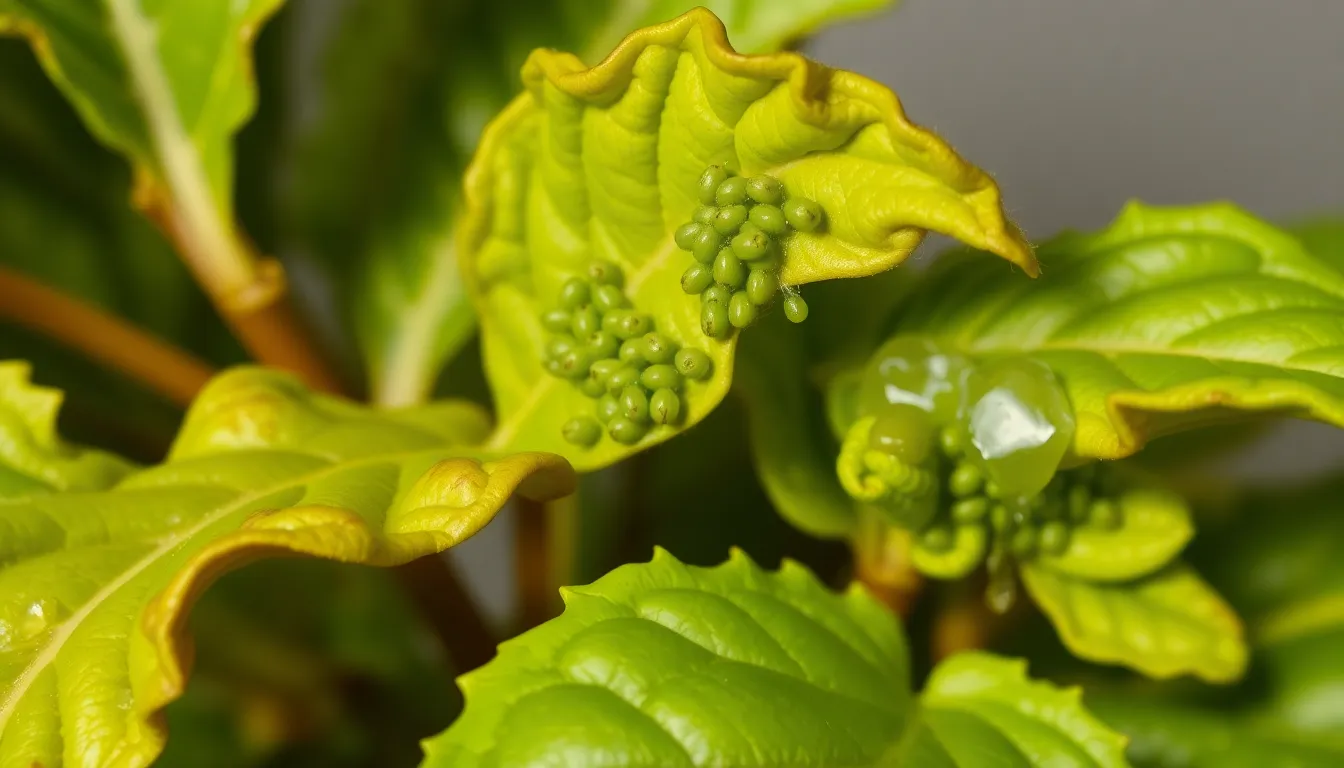
Aphid infestations manifest in various noticeable symptoms. Early detection ensures better chances of preventing significant plant damage.
Identifying Infested Plants
Leaves exhibit curling or distortion when infected by aphids. Sticky residue on leaves and surrounding surfaces indicates honeydew secretion. Yellowing foliage often signals nutrient depletion caused by sap extraction. Additionally, ants may appear, attracted to the honeydew. Check stems and leaf undersides for clusters of small pests, confirming an infestation.
Damage Caused by Aphids
Aphids weaken plants through their feeding habits. Leaf drop occurs due to extensive sap removal. Discoloration leads to reduced photosynthesis, hindering growth. Infected plants may also show signs of sooty mold, which develops due to honeydew accumulation. Stunted growth can result in a struggle for survival against infestations.
Treatment Options for Aphids on Indoor Plants
Treating aphids on indoor plants requires prompt and effective solutions. Various methods exist, ranging from natural remedies to chemical solutions.
Natural Remedies
Natural remedies offer an eco-friendly approach to combatting aphids. Neem oil serves as a potent insecticide, disrupting aphid feeding and reproduction. Garlic spray acts as a repellent, making plants less appealing to these pests. Insecticidal soap, made from natural plant oils, effectively suffocates aphids on contact. Rubbing alcohol diluted with water can eliminate aphids when applied directly. Introducing beneficial insects like ladybugs and lacewings also provides a natural form of control, as they prey on aphids, reducing their population.
Chemical Solutions
Chemical solutions provide a more rapid response to aphid infestations. Pyrethrin-based insecticides quickly eliminate pests by attacking their nervous systems. Systemic insecticides infiltrate plant tissues, targeting aphids feeding on the plants. Always follow the manufacturer’s guidelines for application rates and safety precautions. Insect growth regulators prevent aphids from maturing and reproducing, effectively controlling populations over time. Chemical treatments may require multiple applications for full effectiveness, especially in severe infestations. Prioritizing plant safety and checking compatibility with indoor use remains essential when selecting these products.
Prevention Strategies
Preventing aphids on indoor plants requires consistent care and attention. Implementing effective strategies can minimize the risk of infestations.
Best Practices for Indoor Plant Care
Maintaining optimal health for indoor plants significantly reduces aphid risks. Ensure proper watering techniques to prevent overwatering or underwatering, which weakens plants. Select high-quality soil to provide necessary nutrients. Utilize sterile pots to avoid introducing pests. Group plants carefully, preventing overcrowding and enhancing airflow. Keep leaves clean by dusting them regularly, making it harder for aphids to settle. Fertilize appropriately to promote strong growth, as robust plants naturally resist pests more effectively.
Regular Monitoring Techniques
Regular monitoring techniques help detect issues before they escalate. Inspect plants weekly for signs of aphids or their damaging effects. Use a magnifying glass to spot tiny pests hidden on the undersides of leaves. Check new plants for any existing infestations before introducing them to your collection. Observe for common indicators like sticky residue or distorted leaves. Establish a tracking system to log observations, supporting timely interventions. Stay vigilant, as early detection significantly contributes to more effective control measures.
Conclusion
Addressing aphids on indoor plants is essential for maintaining their health and vitality. By recognizing the signs of an infestation early and implementing effective treatment methods, plant owners can safeguard their greenery from damage. Utilizing natural remedies and preventative measures not only protects plants but also contributes to a healthier indoor environment. Regular monitoring and proper care practices play a vital role in keeping aphids at bay. With diligence and the right strategies, indoor plant enthusiasts can enjoy thriving plants free from these pesky invaders.

